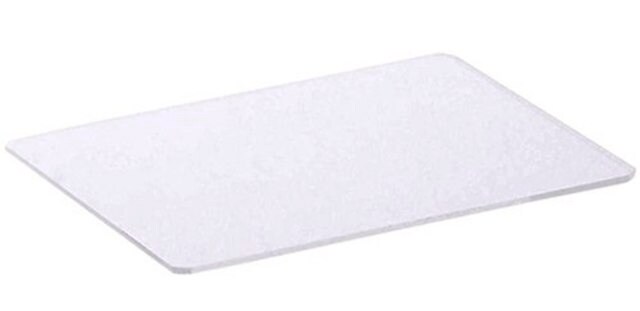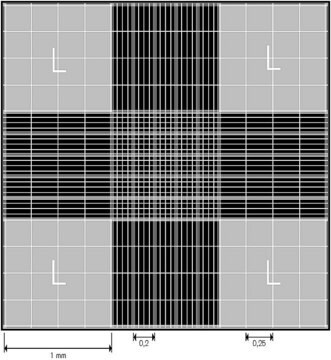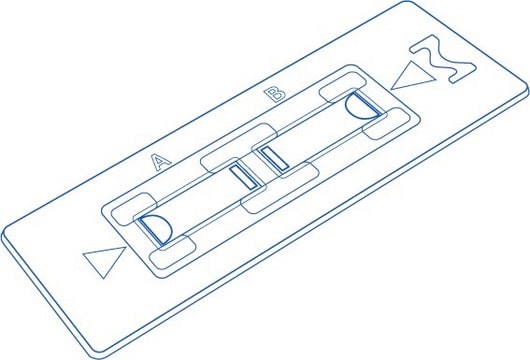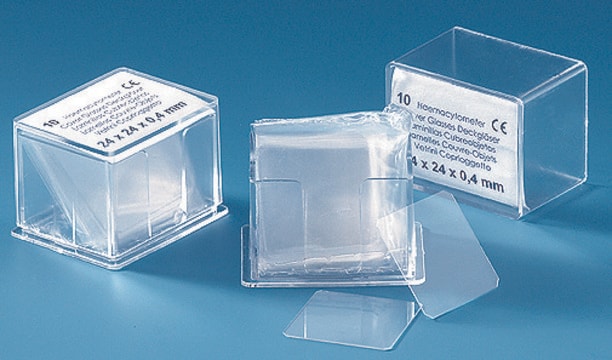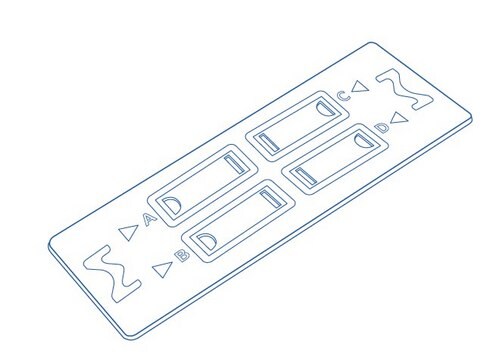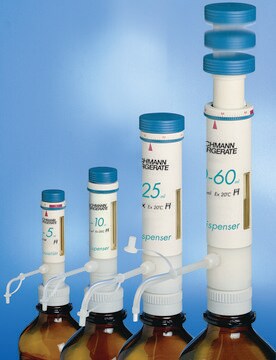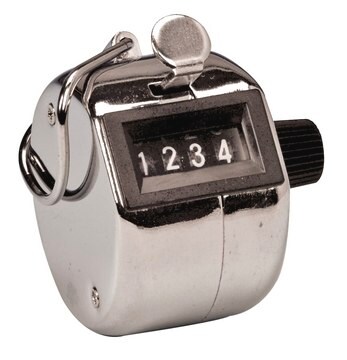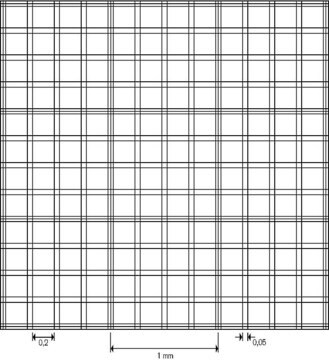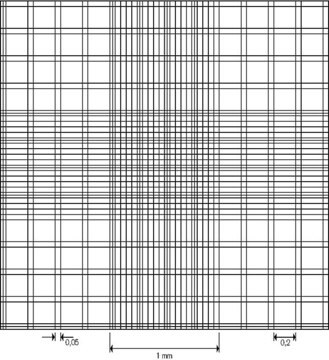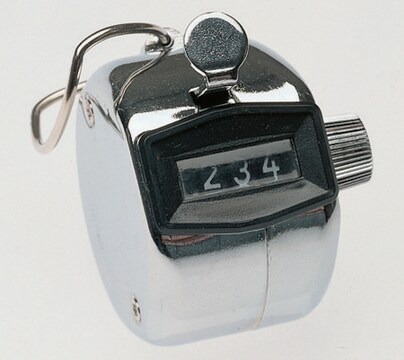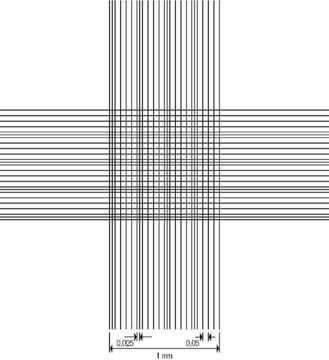Z359629
Bright-Line™ Hemacytometer
supplied with two cover slips
Synonym(s):
hemacytometers
Sign Into View Organizational & Contract Pricing
All Photos(1)
About This Item
UNSPSC Code:
41122600
NACRES:
NB.22
Recommended Products
material
colorless
glass
sterility
non-sterile
wells
2
General description
The Bright-Line™ Hemacytometer is molded from a single piece of thermal and shock-resistant glass. An H-shaped moat forms two counting areas, or plateaus. A "V" slash at the loading side of each plateau facilitates charing and reduces the possibility of overflow into the moat. Each plateau features enhanced Neubauer rulings.
The ruled surface is 0.1mm below the cover glass, limiting the volume of blood or fluid over a square mm at 0.1cu.mm and over each of 400 squares (within the central square mm) to 0.00025 cu. mm. Contact of the flat, polished cover glass surfaces with cover glass supports produces an exact volume of fluid over the counting area. The difference in surface tension characteristics between the metallic surface on the chamber and the polished cover glass assures smooth capillarity for precise loading and more even cell distribution.
Replacement cover slips sold separately: Z375357
The ruled surface is 0.1mm below the cover glass, limiting the volume of blood or fluid over a square mm at 0.1cu.mm and over each of 400 squares (within the central square mm) to 0.00025 cu. mm. Contact of the flat, polished cover glass surfaces with cover glass supports produces an exact volume of fluid over the counting area. The difference in surface tension characteristics between the metallic surface on the chamber and the polished cover glass assures smooth capillarity for precise loading and more even cell distribution.
Replacement cover slips sold separately: Z375357
Application
Bright-Line® Hemacytometer is used for cell counting. It may be used for determining the spore concentrations in spore suspension. It might also be used to count the number of oocytes present in stock solutions.
Legal Information
Brady is a registered trademark of Brady Worldwide, Inc.
Bright-Line is a trademark of Cambridge Instruments, Inc.
recommended
Certificates of Analysis (COA)
Search for Certificates of Analysis (COA) by entering the products Lot/Batch Number. Lot and Batch Numbers can be found on a product’s label following the words ‘Lot’ or ‘Batch’.
Already Own This Product?
Find documentation for the products that you have recently purchased in the Document Library.
Customers Also Viewed
Henry K Lin et al.
Clinical cancer research : an official journal of the American Association for Cancer Research, 16(20), 5011-5018 (2010-09-30)
Sensitive detection and characterization of circulating tumor cells (CTC) could revolutionize the approach to patients with early-stage and metastatic cancer. The current methodologies have significant limitations, including limited capture efficiency and ability to characterize captured cells. Here, we report the
Francis A Armah et al.
Journal of ethnopharmacology, 211, 207-216 (2017-10-04)
Leishmaniasis is one of the neglected tropical disease caused by a protozoan of the genus Leishmania transmitted by sandflies. High cost and lack of oral formulation of existing drugs, rapid developments of resistance by the parasite coupled with serious side
R Weber et al.
Journal of clinical microbiology, 29(7), 1323-1327 (1991-07-01)
To determine the minimum number of Cryptosporidium oocysts that can be detected in stool specimens by diagnostic procedures, stool samples seeded with known numbers of Cryptosporidium parvum oocysts were processed by the modified Formalin-ethyl acetate (FEA) stool concentration method. FEA
Rafał L Górny et al.
Applied and environmental microbiology, 68(7), 3522-3531 (2002-06-29)
The aerosolization process of fungal propagules of three species (Aspergillus versicolor, Penicillium melinii, and Cladosporium cladosporioides) was studied by using a newly designed and constructed aerosolization chamber. We discovered that fungal fragments are aerosolized simultaneously with spores from contaminated agar
Ogochukwu Izuegbuna et al.
PloS one, 14(1), e0209682-e0209682 (2019-01-30)
The Opuntia spp. have been used in traditional medicine for many centuries. It is used in the management of diseases that involves oxidative stress, especially diabetes, obesity and cancer. Opuntia stricta (Haw) is one of the relatively unknown species in
Articles
Cell based assays for cell proliferation (BrdU, MTT, WST1), cell viability and cytotoxicity experiments for applications in cancer, neuroscience and stem cell research.
Our team of scientists has experience in all areas of research including Life Science, Material Science, Chemical Synthesis, Chromatography, Analytical and many others.
Contact Technical Service